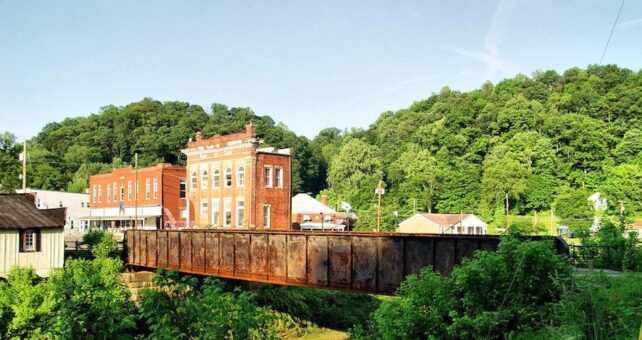Focus Term: Economic Impact
resource
Parkersburg to Pittsburgh Rail-Trail: Bringing a world-class trail network to West Virginia
April 06, 2018
Executive Summary: In West Virginia, an incredible opportunity awaits. The 238-mile Parkersburg to Pittsburgh (P2P) rail-trail is already nearly 80 percent complete; just a few short gaps exist in West Virginia to unlock a contiguous 150-miles-plus stretch of the rail-trail from Parkersburg to the state’s border with Pennsylvania. Completing these short gaps in Wood, Harrison […]

resource
D&H Rail-Trail: User Survey and Economic Impact Analysis (
December 31, 2017
The Delaware & Hudson (D&H) Rail-Trail is a multi-use stone trail located in rural northeast Pennsylvania that has significant snowmobile use. It generally follows the border of Susquehanna and Wayne counties and reaches to the New York state line from its southern terminus near the city of Carbondale. From December 2015 through October 2017, Rails-to-Trails […]
resource
Mon River Trail System Economic Impact
August 01, 2017
The Mon River Trail System is a vibrant 48-mile rail-trail network in north central West Virginia and a critical link in the Parkersburg to Pittsburgh connection envisioned by the Industrial Heartland Trails Coalition. The Mon River Trail System Economic Impact study revealed the system’s impact on the region and Monongalia County’s growing economy, where business […]
resource
Business Impact of Mon River Trails System
April 04, 2017
This report summarizes a study of the business impact of the Mon River Trails System (MRTS), a network of 48 miles of trails in north-central West Virginia that has been in operation in-whole or in-part since 1998. The findings from the work are applicable for many audiences, including trail advocates, elected officials, economic development entities […]
resource
Assessing the Economic and Livability Value the Tammany Trace Rail Trail
May 01, 2015
Multi-use trails bring recreational and health qualities to regions, but what is overlooked sometimes is the overall economic impact along with the increased livability that these trails can inevitably bring. This study looks into how small town south Louisiana has embraced its very own rail-trail, the Tammany “Trace,” as the clear recreational jewel and envy […]
resource
Erie to Pittsburgh Trail User Survey and Economic Impact Analysis (2013)
January 01, 2014
In 2013, Rails-to-Trails Conservancy (RTC) conducted a study of six connected trails (the Trails) that make up the central leg of the developing 270-mile Erie to Pittsburgh Trail (EPT) and are located in northwest Pennsylvania. The Trails are connected by geography, history and marketing. Owned, operated and maintained by several trail organizations and municipalities, the […]
resource
The Impact of the Little Miami Scenic Trail on Single Family Residential Property Values
January 01, 2008
Across the United States, many conversions of abandoned railroad rights-of-ways into trails have faced opposition from surrounding property owners. Much of the opposition derives from the fear that developing trails would cause a decrease in property values because of loss of privacy, increase in noise, traffic, litter and crime. The objective of this study is to assess the […]
resource
From Trail Towns to TrOD: Trails and Economic Development
August 01, 2007
Trails and green space are important community amenities that help to spur economic development. From home owners choosing to live along a park-like trail to bicycle tourists making their way from small town to small town, trails are important community facilities that attract people and dollars.
resource
Community Trails: A Benefit to All
May 17, 2006
Trails and greenways create opportunities for people of all ages to bicycle, walk, hike and jog. Across the country, trails and greenways are stimulating tourism and recreation spending, and in many rural communities they are seen as a catalyst for economic growth. In providing attractive, safe, accessible, and low- or no-cost places, they also make it easier for people to […]
resource
Economic Benefits of Trails and Greenways
October 01, 2003
This fact sheet examines the value of trails and greenways. Despite different methodologies of different studies, there is growing evidence of such facilities’ value in terms of increased property values, community assets, and a host of environmental and economic benefits.
-
First
Previous
1
2
3
4
5
Next
Last